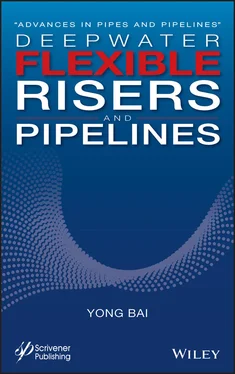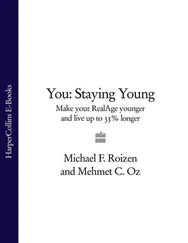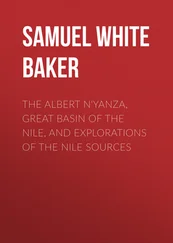23 Chapter 23Figure 23.1 Structure of FRFP.Figure 23.2 Torsion deformation of three specimens.Figure 23.3 The cross-section in the bulge area of Specimen 2.Figure 23.4 The cross-section in the bulge area of Specimen 3.Figure 23.5 The damage of reinforced layers of Specimen 1 after parting from out...Figure 23.6 Torque-torsion angle curves of three test specimens.Figure 23.7 Cylindrical coordinate system.Figure 23.8 Relationship between on-axis coordinate (L, T, r) and off-axis coord...Figure 23.9 Front view of FRFP.Figure 23.10 Side view of FRFP.Figure 23.11 Discrete field of one layer before aligning orientation.Figure 23.12 Discrete field of one layer after aligning orientation.Figure 23.13 Deformation and von Mises stress distribution.Figure 23.14 Torque-torsion angle relationship of three methods.Figure 23.15 Torque-torsion angel relations under different winding angles.Figure 23.16 Torque-torsion angel relations under different reinforced layer thi...Figure 23.17 Torque-torsion angel relations under different radius-thickness rat...
24 Chapter 24Figure 24.1 Schematic diagram of pipeline structure.
25 Chapter 25Figure 25.1 FGRFP tension time histories.Figure 25.2 FGRFP bending moment time histories.Figure 25.3 Rain flow histogram of tension.Figure 25.4 Rain flow histogram of bending moment.Figure 25.5 Stress nephogram.Figure 25.6 Stress time histories of inner PE layer and outer PE layer.Figure 25.7 Stress time histories of all structural layers. The mean stress of t...Figure 25.8 Stress of 55° layers.Figure 25.9 Stress of −55° layers.Figure 25.10 Comparison of 55° layer and −55° layer (0.75 mm).Figure 25.11 Stress comparison of PE layer under different thickness of fibergla...Figure 25.12 Comparison of 55° layer and −55° layer (0.5 mm).Figure 25.13 Comparison of 55° layer and −55° layer (0.25 mm).Figure 25.14 Stress contrast of reinforcement layer under different thicknesses.Figure 25.15 S-N Curve of FGRFP.
26 Chapter 26Figure 26.1 Typical flexible riser structure.Figure 26.2 Drawing of FMC end-fitting.Figure 26.3 Interlock structure of carcass.Figure 26.4 Inner liner expander.Figure 26.5 Carcass under external pressure.Figure 26.6 Deformation of carcass during pressure cycling.Figure 26.7 P cand δ carrelationship for different carcass profiles and pipe siz...
27 Chapter 27Figure 27.1 An example of a bend stiffener.Figure 27.2 Local response model.Figure 27.3 Extreme load description.Figure 27.4 Load contour.Figure 27.5 Capacity curve and bend stiffener performance.Figure 27.6 Bend stiffener geometry.Figure 27.7 Bend stiffener performance.Figure 27.8 Design chart for bend stiffener.
28 Chapter 28Figure 28.1 Steel tube umbilical or thermoplastic umbilical with spool [1].Figure 28.2 Thermoplastic umbilical [1].Figure 28.3 Thermoplastic umbilical [3].Figure 28.4 Thermoplastic umbilical [4].Figure 28.5 Thermoplastic umbilical [5].Figure 28.6 Thermoplastic Umbilical [7].
29 Chapter 29Figure 29.1 Degrees of freedom of floating structures.Figure 29.2 The static state of the pipeline under a water depth of 150 m.Figure 29.3 The static state of pipelines at different lay angles.Figure 29.4 Top tension at different lay angles.Figure 29.5 Top tension at different water depths.Figure 29.6 Wave direction distribution.Figure 29.7 Maximum tension at a lay angle of 70°.Figure 29.8 Minimum tension at a lay angle of 70°.Figure 29.9 Minimum bending radius at a lay angle of 70°.Figure 29.10 Maximum tension at the lay angle of 80°.Figure 29.11 Minimum tension at the lay angle of 80°.Figure 29.12 Minimum bending radius at a lay angle of 80°.Figure 29.13 The relationship between the minimum bending radius and the submerg...
1 Chapter 2 Table 2.1 Interlocked carcass cross-section parameters. Table 2.2 Interlocked carcass parameters. Table 2.3 Collapse pressures. Table 2.4 SSRTP-1 parameters. Table 2.5 SSRTP-2 parameters. Table 2.6 Collapse pressures.
2 Chapter 3 Table 3.1 Geometric and material parameters of FEM. Table 3.2 Pressure armor layer geometrical properties. Table 3.3 Steel strip geometrical properties. Table 3.4 Models with different inner radius. Table 3.5 Prediction by two theoretical models.
3 Chapter 4 Table 4.1 Parameters for pressure armor layer. Table 4.2 Pipe’s parameters.
4 Chapter 5 Table 5.1 Design requirements.Table 5.2 Geometrical parameters.Table 5.3 Material parameters.Table 5.4 Utilization factors for flexible pipe.Table 5.5 Load cases.Table 5.6 Maximum stresses and strains summary by layers.Table 5.7 Comparison between theoretical and FEM results.
5 Chapter 7Table 7.1 The maximum SM3 and SM2 in different coiling drum diameter.Table 7.2 The maximum SM3 in different sinking distance.Table 7.3 The maximum SM3 in different reeling length.Table 7.4 The maximum SM3 of each case.
6 Chapter 9Table 9.1 Riser parameters.Table 9.2 Other environmental parameters.Table 9.3 Result comparisons of analytical model and FEM by OrcaFlex.Table 9.4 Result comparisons in TDP area.
7 Chapter 10Table 10.1 Flexible riser parameters.Table 10.2 Environmental parameters.Table 10.3 Results of numerical method vs. FEM by OrcaFlex.
8 Chapter 11Table 11.1 Unbonded flexible pipe parameters.Table 11.2 Environment and hydrodynamic coefficients.Table 11.3 Static result comparisons.
9 Chapter 12Table 12.1 Physical parameters of the towed cable.Table 12.2 Physical parameters of the towed body.
10 Chapter 14Table 14.1 Wave scatter diagram.Table 14.2 Stochastic wave load.Table 14.3 Input parameters of flexible pipe.Table 14.4 Input parameters of hydrodynamic coefficient.
11 Chapter 16Table 16.1 STU layup data.Table 16.2 Comparing different STU fatigue approaches.Table 16.3 Comparing base case to sensitivities—all time domain.
12 Chapter 19Table 19.1 Dimension of specimens.Table 19.2 The results of external pressure test.Table 19.3 Dimension of FRGFP.Table 19.4 Material parameters of FGRFP.
13 Chapter 20Table 20.1 Geometric parameters of testing specimens.Table 20.2 Material properties of each layer.Table 20.3 Burst pressure of the testing specimen.Table 20.4 Comparison of three methods.
14 Chapter 21Table 21.1 Specifications of the tensile test specimen.Table 21.2 Geometric parameters of the tensile test specimen.Table 21.3 Material properties of FGRFP.Table 21.4 Ultimate tensile strength (kN).Table 21.5 Different diameter-thickness ratios of FGRFP.
15 Chapter 22Table 22.1 Dimensions of test facility.Table 22.2 Material properties of testing specimens.Table 22.3 Geometric parameters of testing specimens.Table 22.4 Valid length and diameter of specimens.Table 22.5 Summary of bending test data.
16 Chapter 23Table 23.1 Material properties of testing specimens.Table 23.2 Geometric parameters of testing specimens.Table 23.3 Valid length and diameter and diameter of specimens.Table 23.4 Elastic constants of reinforced layers.
17 Chapter 24Table 24.1 Long-term hydrostatic pressure reduction factor for composite pipes a...
18 Chapter 25Table 25.1 Size parameters of EGRFP.Table 25.2 Material parameters of EGRFP.Table 25.3 Environmental parameters.Table 25.4 Specific Parameters of the layer.
19 Chapter 26Table 26.1 Carcass properties.Table 26.2 Maximum possible contact pressure.
20 Chapter 27Table 27.1 Non-dimensional parameters.
21 Chapter 29Table 29.1 Pipe parameters.Table 29.2 Static analysis of flexible laying.Table 29.3 Top tension at different lay angles.Table 29.4 Top tension at different water depths.Table 29.5 Wave environmental parameters.Table 29.6 Ocean current parameters.Table 29.7 Dynamic response results in different wave directions.Table 29.8 Dynamic response results with a lay angle of 80°.Table 29.9 Sensitivity analysis results of different submerged weights.
1 Cover
2 Table of Contents
Читать дальше












